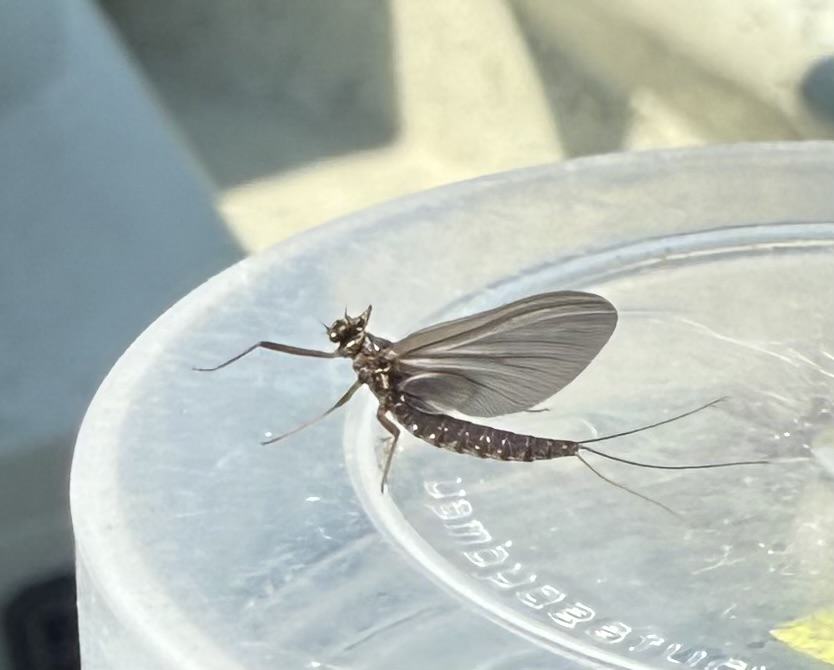
Snake River
Flows from Jackson Lake Dam are at approximately 2,180 cfs. While PMDs are the most noticeable hatch, it is the typical autumn emergences – Claassenia, Hecuba, and mahogany duns – are the main fare at the moment. Larger attractors are getting into fish along banks, structure, troughs, and eddies. #10 to #14 mayfly patterns are working in the same water, but produce even better in riffles, side channels, confluences, and seams. These patterns are performing best from between 11am until 4pm most days. Expect the surface action to intensify on days with cloud cover and precipitation. Dry flies (as well as dry-dropper rigs) are working well throughout the system, although it is the lower two-thirds of the river from Moose down to Sheep Gulch that the most consistency is being found.
Streamers have been producing with more consistency over the past couple of weeks. Jig patterns are producing best, followed by moderately sized patterns that are darker in color (olive, purple, brown, and black). The middle reaches between Moose Bridge and South Park Bridge are slightly fishing better. Banks, structure, confluences, seams, and side channels are key targets. Floating lines or short INT to 3ips tips are performing best. Vary up your retrieves as much as possible, but concentrate mostly on moderate line strips and downstream retrieves.
South Fork
Flows from Palisades Reservoir are at 8,400 cfs. Mutant stones are waning but there is still decent action in faster currents along banks and parallel drop-offs. With the right weather in, mahogany duns and BWOs are really popping, making riffles, eddies, seams, side channels, and flats very much worth targeting.
Nymphing has been producing better than surface patterns. Banks with slow to moderate currents, troughs, side channels, riffles, and eddies are good places to focus on. Adjust your depth based on the holding water you are hitting, with the caveat that much of the action is occurring in the middle third of the water column.
Streamers are not lighting it up, but there are days when they can produce better than nymphs. One thing that is for certain is that they are getting into more larger fish than nymphs or dries. As on the Snake, jig patterns and moderately sized baitfish imitations are working best. Go with floating lines or sinking tips in the INT to 3ips range and slow to moderate retrieves with hesitations in your line strips every now and then.
Flat Creek
Some technical fishing should be with us for the next six weeks of the season on Flat Creek, requiring a delicate presentation and lighter tippet (think 6X). One caveat is that there has been action on mouse patterns on the morning hours and with dancing craneflies in the early morning hours (before 8:30am). Action later in the day is coming on #18-#22 chironomid, mahogany dun, and trico adult imitations in riffles, confluences, seams, and along undercut banks. Nymphs imitating the same naturals are working in confluences, eddies, along undercut banks and structure, and riffles. Although a lot of focus is required at the moment, getting into a few 18” to 22” cutthroats is in the cards with the right approach and patience.
Yellowstone National Park
The previously closed Madison, Firehole and Gibbon rivers are now open (with time constraints on some days). The Yellowstone River has been producing in solid fashion as it usually does this time of year, as are the streams of the Lamar drainage (Slough Creek, Soda Butte Creek, and the Lamar River itself). The lakes – Lewis and Yellowstone – will be kicking into gear in the next couple of weeks as browns and lake trout begin to stage for spawning and cutthroats start to feed heavily in preparation for winter.